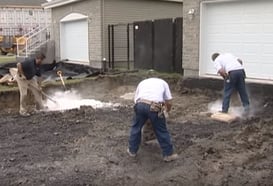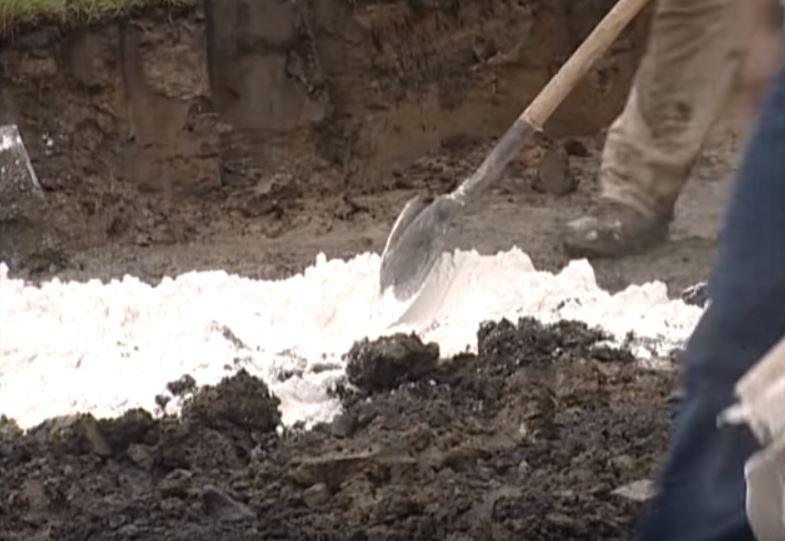Paver Pete describes how to stabilize your soil subgrade in an interlocking pavement installation.
Since it’s a new construction, we wanted to excavate all the way to the in situ soil.
The predominant soil type is a clay soil. It has high pliability.
The level of fines in this soil is so high that a gradation amendment alone is not enough.
Usually, the first step would be compacting a three-quarter inch clean stone into this layer to change the gradation of the clay and increase its bearing ability.
However, it won’t be enough for this project.
Here are the steps to follow:
STEP 1: Apply lime or a type S mortar as stabilization material over the clay soil to change its chemical composition.
We will need around 12 bags of mortar mix for this 900 ft.² area.

STEP 2: Rake the material so it can penetrate the subgrade properly.
We want an even coat of these materials over the clay.

STEP 3: Add clean stone and compact it to 98% standard Proctor density.
Lime or a type S mortar mix are a better choice than straight Portland in this case.
Straight Portland cement has the potential to crack and not retake its original shape. This will create an imperfection on the surface of the pavement.
In an interlocking pavement application, it’s important to retain the flexibility of the system.
BECOME A TECHO-PRO AND GET INCREASED ONLINE VISIBILITY TODAY!



